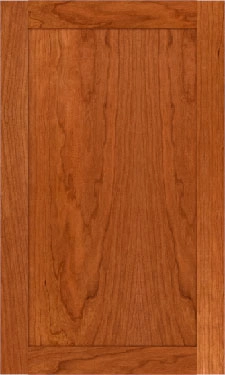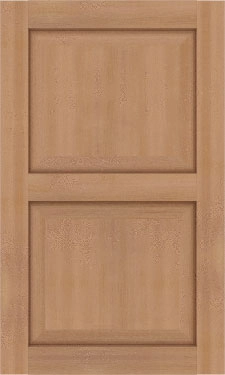Small details, big impact: the right cabinet door style can redefine a space. From Shaker simplicity to raised-panel refinement, discover how to choose doors that combine beauty, function, and lasting value.
Why Cabinet Door Style Matters
Cabinet doors cover a large portion of the visual surface in kitchens and bathrooms. They set the tone for color, texture, and scale — often more than countertops or fixtures. In other words, the profile and finish you choose will shape the room’s personality every time someone walks in.
Style also impacts function: certain profiles hide fingerprints better, some are easier to clean, and others may better accommodate soft-close hinges, integrated handles, or glass inserts. High-quality cabinet doors crafted with attention to joinery and materials last longer and perform better — saving time and money in the long run.
Classic & Timeless Styles
Shaker Doors
Design: A flat center panel with a simple, square-edged frame. Clean, minimal, and endlessly adaptable.
Best for: Transitional, farmhouse, and Scandinavian interiors.
Why choose it: Shaker doors balance modern simplicity with traditional proportions. They pair easily with a wide range of hardware finishes and paint colors, making them a safe long-term choice for homeowners who want flexibility.
Tip: White or soft-gray Shaker doors with matte black hardware create a crisp, contemporary feel; natural stains highlight the wood’s grain for warmer, rustic kitchens.
Raised Panel Doors
Design: A central panel that’s elevated from the surrounding frame, often with contoured edges and additional moulding detail.
Best for: Traditional, colonial, and formal kitchen designs.
Why choose it: Raised panel doors add depth and a handcrafted look that reads as luxurious and timeless. They work exceptionally well with crown moulding, paneled islands, and stone countertops.
Tip: Use rich stains like walnut or cherry to accentuate the profile; a clear finish can emphasize joinery and grain that speaks to high-end craftsmanship.
Recessed (Inset) Panel Doors
Design: The central panel sits slightly below the surrounding frame, producing a subtle shadow line and refined detail.
Best for: Transitional or craftsman-style interiors that want detail without excess ornamentation.
Why choose it: Recessed panels offer a quieter, tailored look. Painted finishes (soft whites, muted blues, or greys) work beautifully to keep the palette calm and cohesive.
Contemporary & Trend-Focused Styles
Slab (Flat-Panel) Doors
Design: Smooth, unframed fronts with no visible panels — ultra-minimal.
Best for: Modern, minimalist, and Scandinavian-inspired kitchens and baths.
Why choose it: Slab doors read as sleek and streamlined. They excel in open-plan spaces and can be finished in high-gloss lacquer to visually expand smaller rooms or in natural veneer for warmth.
Tip: Pair slab fronts with integrated or handle less hardware for a seamless, contemporary look.
Beadboard Doors
Design: Narrow vertical grooves along the face of the door that create texture and a handcrafted vibe.
Best for: Cottage, coastal, and farmhouse interiors.
Why choose it: Beadboard brings casual charm and tactile interest. It’s a great choice for guest bathrooms, beach houses, or kitchens that want a relaxed, lived-in feel.
Glass-Front Doors
Design: A wood frame with clear, frosted, or textured glass inset.
Best for: Transitional or eclectic spaces where display and openness matter.
Why choose it: Glass doors lighten the visual weight of cabinetry and provide an opportunity to showcase attractive dishware or decorative items. Frosted or seeded glass offers privacy while still admitting light.
Tip: Use glass-front doors in upper cabinets to avoid clutter visibility in high-traffic zones.
How to Choose the Right Style for Your Space
Choosing the right cabinet door style is part taste and part strategy. Use this checklist to make a confident decision:
- Match the home’s architecture: A period home benefits from raised panel or recessed profiles; a contemporary home often suits slab or reduced-detail doors.
- Consider scale and proportion: Large, paneled doors can overwhelm a small kitchen; slimmer profiles and higher-gloss finishes can help small rooms feel larger.
- Think about finishes: Paint conceals wood grain and reads more contemporary, while stain showcases natural character and warmth.
- Balance trends with timelessness: Opt for a classic profile in primary cabinetry and add trend-forward finishes or accents that are easier to update later (for example, bold island color or hardware swaps).
- Function first: If you need easy-clean surfaces or integrated storage solutions, make sure the door style accommodates those needs.
Hardware, Finish, and Details That Complete the Look
Hardware and finishes are the finishing notes that make the whole composition sing. A few practical guidelines:
- Hardware selection: Brass tones warm up traditional profiles; matte black brings contrast to Shaker and slab designs; brushed nickel or stainless suits modern, industrial looks.
- Edge profiles: Rounded edges feel softer and more casual; square edges feel modern and crisp.
- Paint vs. stain: Paint offers color flexibility and hides imperfections; stain emphasizes wood grain and natural texture.
- Glass choices: Clear for display, frosted for privacy, seeded for vintage charm.
Coordinating hardware finish with faucet finishes or lighting fixtures pulls the entire room together and creates a purposeful, layered design.
The Craftsmanship Advantage
Mass-produced cabinet doors can be inexpensive, but they often lack the thoughtful joinery and material quality that define lasting millwork. Custom doors from Estate Millwork emphasize:
- Quality materials: Sustainably sourced hardwoods selected for stability and grain.
- Precision joinery: Traditional techniques like mortise & tenon ensure structural integrity and long-term performance.
- Tailored finishes: Hand-applied stains and paints for consistent, durable surfaces.
- Customization: Exact dimensions, custom profiles, and unique details to match your vision.
Choosing custom cabinet doors is an investment in appearance and longevity — a small upfront difference that pays dividends over years of daily use.
Inspiration & Pairing Ideas
Here are a few curated pairings to help spark ideas:
- Classic Colonial: Raised panel doors in stained cherry with oil-rubbed bronze hardware.
- Transitional Kitchen: Shaker doors painted soft white, paired with a warm wood island and brass cup pulls.
- Coastal Retreat: Beadboard uppers in pale blue with white slab lowers and frosted glass accents.
- Modern Minimalist: Slab fronts in light maple veneer with integrated handles and matte black fixtures.
Why Investing in Quality Cabinet Doors Is Worth It
Premium cabinet doors provide benefits beyond aesthetics:
- Durability: Solid construction resists warping and hardware failure.
- Lower lifetime cost: Less need for replacement or frequent touch-ups.
- Resale value: Well-executed millwork signals quality to future buyers.
- Personalization: Custom doors let you express a unique design language for your home.
Cabinet doors are a major design lever in kitchens and bathrooms. Whether you prefer the enduring restraint of Shaker doors, the stately depth of raised panels, or the clean simplicity of slab fronts, choosing the right style — and pairing it with thoughtful finishes and quality hardware — will elevate your space.
If you’re ready to move from inspiration to reality, explore Estate Millwork’s custom cabinet door options. Our team blends traditional joinery, premium materials, and tailored finishes to create doors that look beautiful and stand the test of time.









